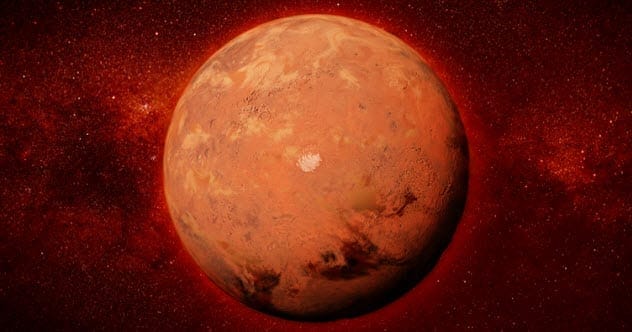The race to colonize Mars is an exciting endeavor. However, it’s not as simple as just sending people to live there. The Red Planet’s geology presents numerous challenges, with researchers still working to understand its complexities. The known aspects include phenomena that could potentially hinder human settlements. Beyond its harsh landscape, Mars holds epic geological mysteries and unique discoveries.
10. The Strange Cloud
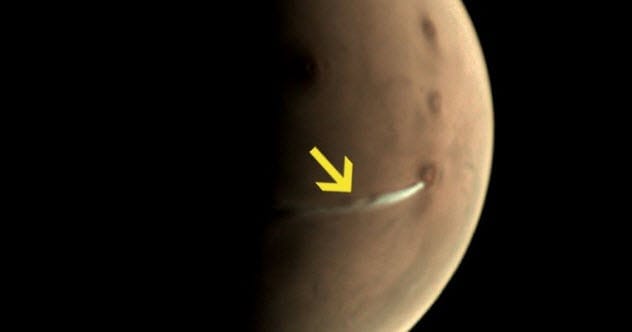
In 2018, the Mars Express orbiter captured an intriguing photo of a cloud near the Martian equator. This white streak, stretching 1,500 kilometers (930 miles), stood out against the planet’s red surface.
Interestingly, the cloud seemed to originate above Arsia Mons, an extinct volcano. While eruptions were impossible, the possibility of the vapor originating from the volcano remained. Clouds often form around Arsia Mons, with similar formations appearing every three years since 2009. This cloud, resembling orographic clouds on Earth, forms on the downwind side of mountains as air cools and condenses on dust particles.
9. First Wind Recording
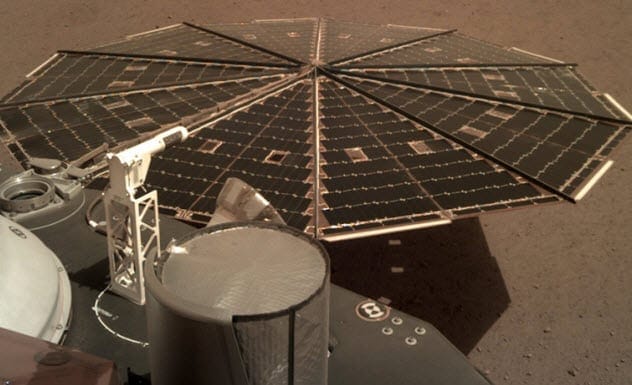
The InSight lander landed on Mars in 2018 with the primary goal of studying the planet’s interior. While adjusting to its new environment, scientists took the opportunity to listen to the wind on Mars.
For the first time, they successfully recorded the sounds of the Martian wind. The sensitive equipment picked up audible sounds and infrasound frequencies. NASA’s recording produced an eerie mix resembling Earth’s wind, the ocean, and something otherworldly. The wind, blowing at 24 kilometers per hour (15 mph) and 16 kilometers per hour (10 mph), was detected by InSight’s air pressure sensor and seismometer.
8. Fire Opals
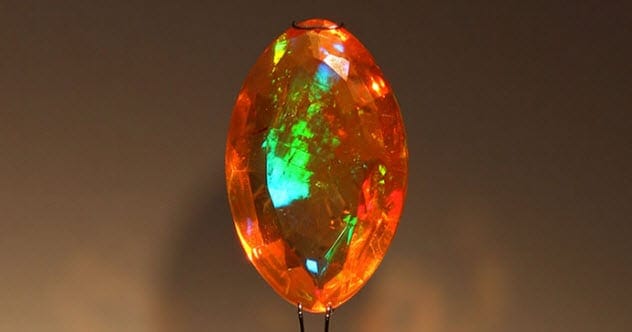
In 1911, a Martian meteorite landed in Egypt, near the village of El Nakhla El Bahariya. This meteorite, named Nakhla, found its way to the Natural History Museum in the UK. In 2015, a reexamination revealed the presence of fire opals, a first for Mars.
Fire opals, with their flame-like tint, typically form around hydrothermal vents in the ocean. These opals can trap microbes during formation, making them valuable for scientists. The discovery opened a new avenue in the search for life on Mars. Although previous surface samples suggested the potential for opal formation, Nakhla provided the first direct evidence. Microscopic analysis indicated the Martian opals were millions or billions of years old, similar to those on Earth. Unfortunately, the samples were too small to search for life, but future missions could target opal regions for larger samples.
7. Mysterious Blueberries
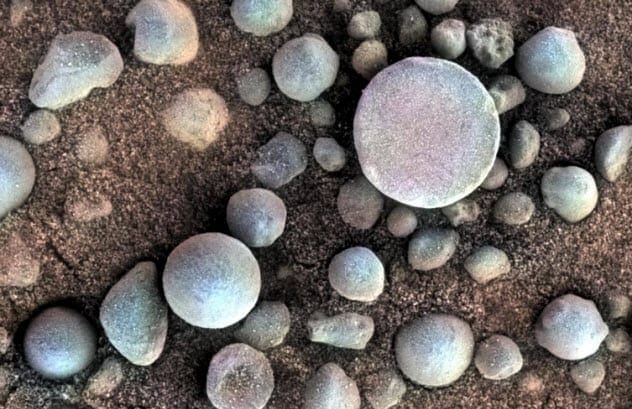
In 2004, NASA’s Opportunity rover encountered tiny spheres scattered across the Martian surface. Dubbed “blueberries” due to false-color photographs, these spheres remain a mystery to scientists.
The question of their geological origin and what they reveal about Mars’s past environment continues to intrigue researchers. Similar formations have been found in Mongolia and Utah, featuring calcite cores encased in iron, shaped by prolonged exposure to moving water. This suggests that the blueberry region was once flooded. If scientists can determine the chemical makeup of the Martian spheres, they may unlock secrets about the water chemistry and the potential for past habitability.
6. Missing Methane

In 2003, NASA announced the discovery of methane on Mars, later confirmed by the European Space Agency (ESA). This discovery was further supported in 2014 when NASA’s Curiosity rover found more of the gas on the Martian surface.
The presence of methane, an organic molecule, excited scientists because it suggested the possibility of life. However, the methane-rich atmosphere later disappeared. In 2016, the ESA’s ExoMars Trace Gas Orbiter (TGO), equipped with ultrasensitive sensors, found no trace of methane. Despite Mars’s previous emissions, TGO never detected any methane, leaving scientists puzzled. Further analysis of TGO’s data may hold the key to the missing or hidden methane.
5. Medusae Fossae Formation

During the 2018 dust storms that forced the Opportunity rover into hibernation, an older mystery resurfaced: Mars has too much dust.
On Earth, dust comes from rivers, volcanic activity, and glaciers, none of which are currently active on Mars. Yet, approximately 3 trillion kilograms (6.6 trillion lbs) of dust appear annually. In 2018, the Medusae Fossae Formation was identified as the primary source of this dust. Originally discovered in the 1960s and thought to be volcanic, it’s the largest volcanic deposit in the solar system, once half the size of the United States. Erosion has created vast amounts of powder, chemically matching the dust found across Mars with its distinctive sulfur-to-chlorine ratio.
4. Earthlike Water Cycle
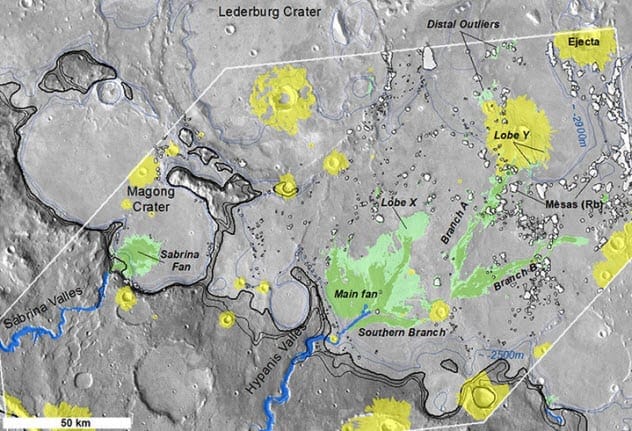
In 2018, scientists investigating Hypanis Valles, an ancient river system, made an amazing discovery: Mars likely had a hydrological cycle similar to Earth’s, complete with a massive ocean.
The study revealed the largest river delta ever found on Mars, leaving trademark deposits that could only have formed if water flowed into a sea covering a third of the planet’s north. The presence of such large water bodies indicates that Mars once had a water cycle supported by lakes, rivers, and oceans. Scientists believe this global system functioned like Earth’s until 3.7 billion years ago, before a rapid decline led to its failure. Today, liquid water is absent from the Martian surface.
3. Curiosity’s Legacy
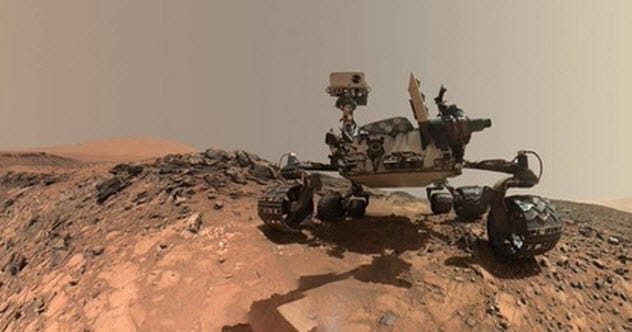
In 2018, NASA’s Curiosity rover made history by providing samples that proved the existence of biological compounds on Mars and shedding light on the planet’s methane mystery.
Geological samples from mudstone regions in the Gale crater, around 300 million years old, revealed organic chemistry nearly identical to Earth’s mudstone but from larger, more complex materials. Curiosity also found a pattern in methane levels, matching the Martian seasons. In the northern hemisphere, methane spiked in the summer and disappeared during winter. One theory suggests that crystalline water structures, called clathrates, could be locking the gas in ice and then thawing it seasonally.
2. Babies On Mars
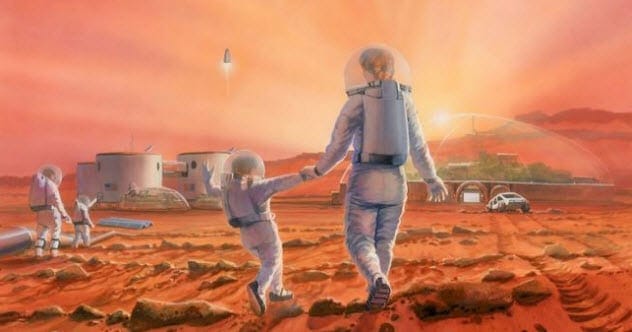
Scientists are highly focused on creating sustainable Mars colonies, which would require generations to be born and raised on the planet. However, significant challenges remain, primarily radiation and gravity.
Astronauts face space radiation, and its effects on a developing fetus could be disastrous. Additionally, Mars’s gravity is only 38 percent of Earth’s, and researchers are unsure how this might affect an unborn baby or a growing child. Animal tests have yielded inconsistent results, and mammalian reproduction in space remains complex. Ethical concerns hinder progress in testing human embryos in space, leaving many questions unanswered.
1. Martian Terraforming Is Out
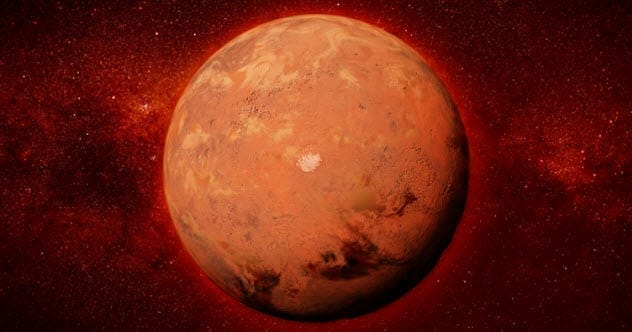
Terraforming, the process of manipulating a planet’s environment to resemble Earth, is essential for humans to walk and breathe on Mars. The first step would be to increase the planet’s temperature with carbon dioxide.
However, a 2018 study dashed these hopes, revealing that there isn’t enough carbon dioxide on Mars to make a significant difference. Even if all CO2 locked in rock and ice were released, it would only triple the atmosphere’s thickness, a mere one-fiftieth of what’s needed for terraforming. Additionally, current technology is inadequate for such large-scale alterations. Mars also lacks a strong enough magnetic field to retain an atmosphere, causing any released CO2 to eventually drift into space.
What do you find most fascinating about Mars? Leave your thoughts in the comments below!


